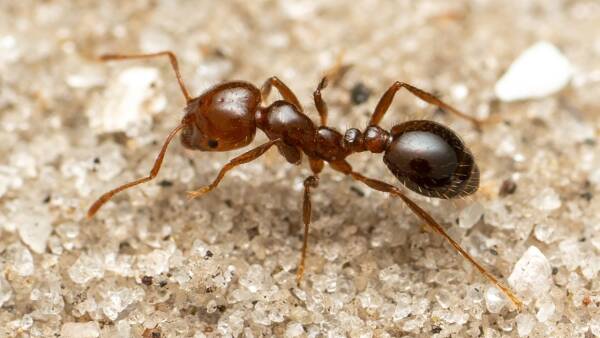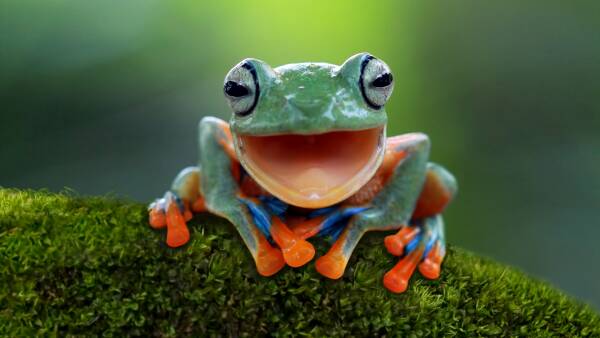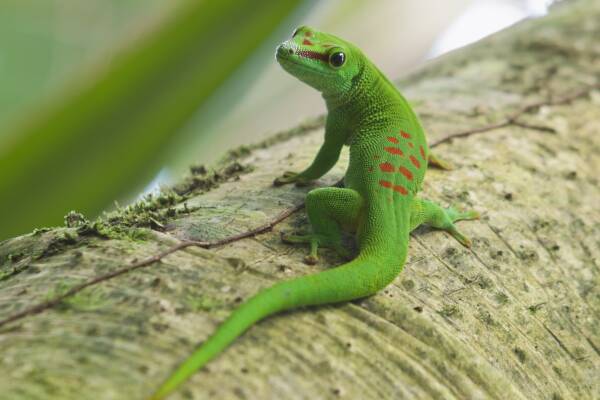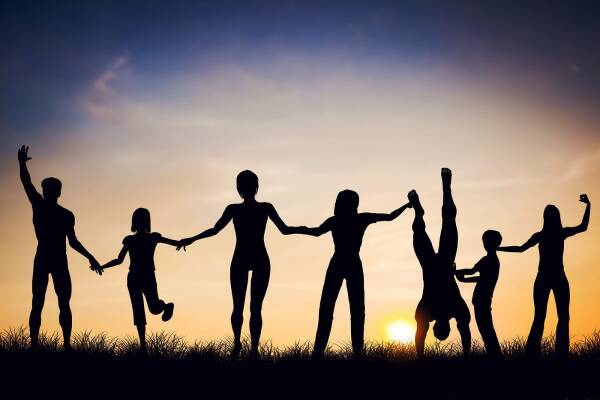Success is staying passionate despite failure over and over again. Although this aphorism has been attributed to Winston Churchill (although perhaps erroneously), it also has deep resonance across the biological world. These creatures have overcome disease, starvation, predation, and human intervention to become the most numerous groups in their respective species classifications, demonstrating a tenacious passion for reproduction and awe-inspiring fecundity. Of course, exact numbers are not available for many biological populations, especially those with clandestine or nocturnal patterns, or those that are widely distributed. Therefore, some of these inferences are based solely on the breadth of a particular species' range or are speculations based on the best available information. I didn't take into account invasive species, especially those domesticated species, some of which number in the billions.

7. Insects - Ants
It’s no surprise that ants are among the most populous insects in the world. Globally, the number of these social hymenoptera insects may be as high as 10-1000 trillion individuals; they represent more than 10,000 species. Although some springtails or springtails were once known as the most numerous organisms, today they are no longer considered part of the insect family, but are included within a larger subphylum that includes insects and several related species. Although a few ant species are considered pests, in most environments ants are very beneficial to the ecosystem. They disperse seeds and promote the decomposition of organic matter while foraging.

6. Crustaceans-Copepods
Copepods are not only the most abundant crustaceans in the world, but they may also be the most abundant multicellular organisms in the world. Approximately 12,000 species exist in fresh and saltwater environments around the world, and they are vital ecological players in their habitats. Most copepods are vase-shaped and only a few millimeters long. They move through the water on paddle-like appendages, voraciously feed on bacteria, algae, and other tiny organisms, and are an important food source for creatures as diverse as fry and baleen whales. Some copepods are even parasites. Their numbers are so large that divers often hear crackling sounds all around them as millions of copepods move through the currents.

5. Fish-Light Fish
The light fish, also known as the light fish, is considered the most abundant fish on earth, surpassing even the widely known and abundant herring to become one of the most abundant vertebrates. They belong to the family Gonostomatidae, which contains more than 30 species. Bristlemouth fish are deep-sea fish. In order to adapt to the dark environment, they have rows of light-emitting organs on both sides of their bodies, called luminophores. These tiny creatures form a key component of the ocean's food chain. Their ubiquity contrasts with their fragility: bristlemouth fish brought to the surface by deep-sea trawlers often suffer damage. Although they are well adapted to the environment of the deep ocean, their fine black or translucent skin cannot withstand the constant friction and pressure changes that occur during fishing. Fortunately, bristlestomids have aquatic adaptations... and the word "bristle" in their name does have a bit of a sting in my opinion.

4. Amphibians-frogs
Frogs are almost certainly the most abundant amphibian. Which smooth-skinned animals are most abundant remains unknown. The order Anura, which includes frogs and toads, has about 5,500 species, but many species are rare or found only in limited areas. Common frogs (Rana temporaria) are widespread across much of Europe, while wood frogs (Lithobates sylvatica) can even be found in waters further north in North America, making them prime candidate species. However, the fully aquatic African clawed frog (Xenopus laevis) is found across much of the continent, especially in the south, so it may compete with other species for numbers. No matter which species has the most individuals, be aware that amphibians around the world are under threat from chytrid, a fungus that can wipe out entire species, making the biblical plague of frogs that sweeps modern cities less likely. .

3. Reptiles-lizards or snakes
There are few firm estimates of which reptiles are actually the most abundant, but there are some possible guesses. The viviparous lizard is a reptile found across a wide area of Europe and Asia, stretching from Britain and France to Japan and Russia, and can even adapt to the lower Arctic. Its name refers to its ability to give birth to live young in cold areas of its range. There are more than a dozen species of snake-like creatures found across much of North America, and their numbers can be very close. No matter what kind of reptile they are, you can be sure they are lizards or snakes. These organisms form the order Squamata, which form the core of the reptile group. Even patients with snake phobia can rest assured that most of these species are completely harmless. They also play an important ecological role by preying on rodents and insects that damage crops and carry disease.

2. Birds-Red-billed Quelea
Let us imagine the horror of Tippi Headley. The Quelea quelea is native to much of Africa and is considered the most abundant bird on Earth. The bird's population varies with the seasons and is estimated to number between 1 billion and 10 billion individuals. Red-billed queleas are very similar to sparrows and finches, but they are only distantly related. They live in large groups and migrate based on the availability of grass seeds for their food. They are considered one of the most serious agricultural pests in Africa. As large numbers of birds threaten to significantly reduce crop yields, measures have been taken to combat the problem, including aerial spraying of poisons. However, this also means that predators and scavengers that share the food chain with the red-billed quelea may be affected by the poison.

1. Mammals - humans
It is estimated that humans may be the most numerous mammalian species currently on Earth. By 2011, the global human population had reached approximately 7 billion, far more than the rest of our fellow beasts. The only species that may approach or exceed us in numbers are the brown rat (Rattus norvegicus) and the house mouse (Mus domesticus), whose evolutionary history and distribution are closely related to our own. However, given that it's unlikely that these rodents developed literacy and started filling out census forms (unless we exclude "NIMH escapees" with superior mental health conditions), we may never know for sure how many there are. Which scenario is more uncomfortable—more than 7 billion rats or more than 7 billion humans—is a nagging question.
animal tags: Insects ants humans frogs fishes
We created this article in conjunction with AI technology, then made sure it was fact-checked and edited by a Animals Top editor.